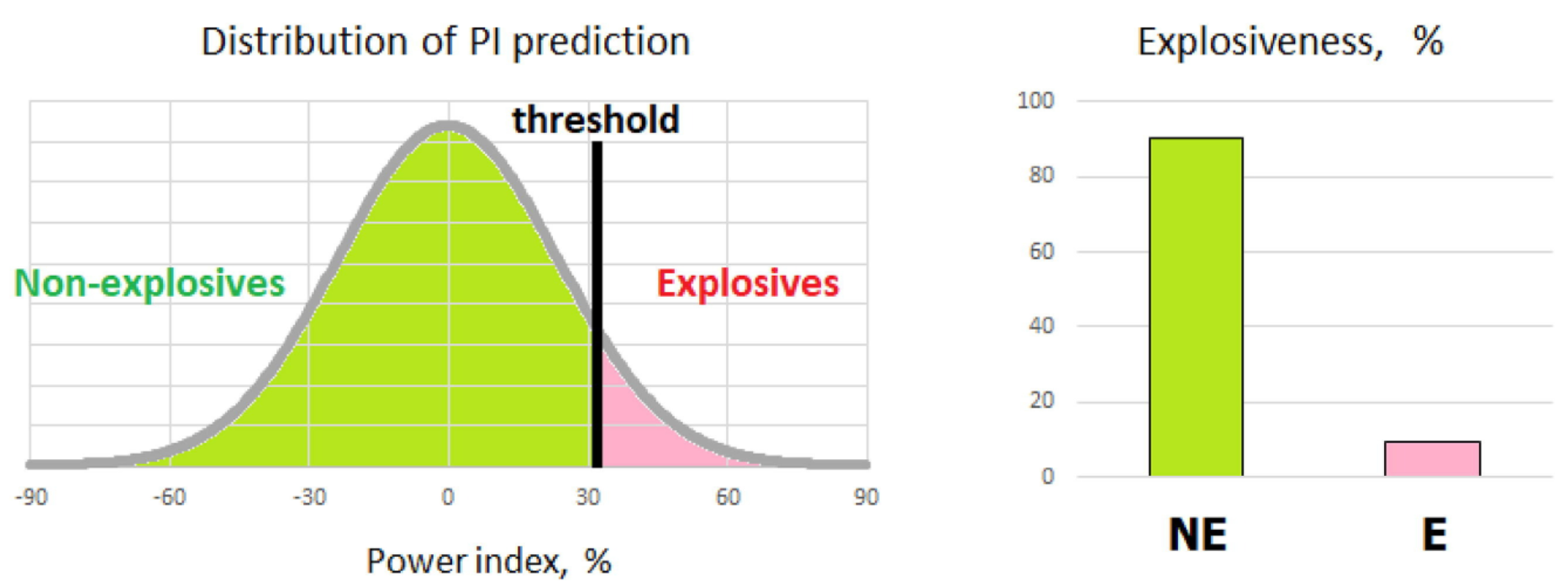Predicting explosive properties of chemicals accounting for thermodynamic and kinetic factors
Computational toxicology (2022)
A novel modelling platform, the Merck Explosive Prioritisation Scheme, is introduced. It's dependent on neither atom types nor the chemical class of the assessed molecule. The thermodynamic layer includes simulation of chemical decomposition with further estimation of the enthalpy of the decomposition and the volume of released gases. A new algorithm, the "Greedy" method, is used in calculating decomposition enthalpy. The heats of formation are estimated by quantum-chemical calculations. The enthalpy of decomposition and volume of released gases are used to predict the Power Index (PI) of the chemicals estimated as the ratio of the explosive power of the analysed substance towards the reference chemical picric acid. Based on regulatory defined thresholds for the enthalpy of explosion and volume of released gases, a threshold for the PI is defined. Chemicals are classified as "explosive" if their PI values are higher than the threshold. The performances of the algorithms in the thermodynamic layer showed good predictability. Given the nature of the Greedy algorithm, the thermodynamic model tends to slightly overpredict experimental power indices but never underestimates the explosive properties of chemicals. The kinetic layer estimates the explosive sensitivity by applying the COREPA model based on quantum-chemical and physicochemical parameters. The COmmon REactivity PAttern (COREPA) modelling system performs well for the impact sensitivity dataset. Given the limited number of chemicals used to derive the model, its current applicability domain is narrow.

